
…Keep reading
Source link



…Keep reading
Source link
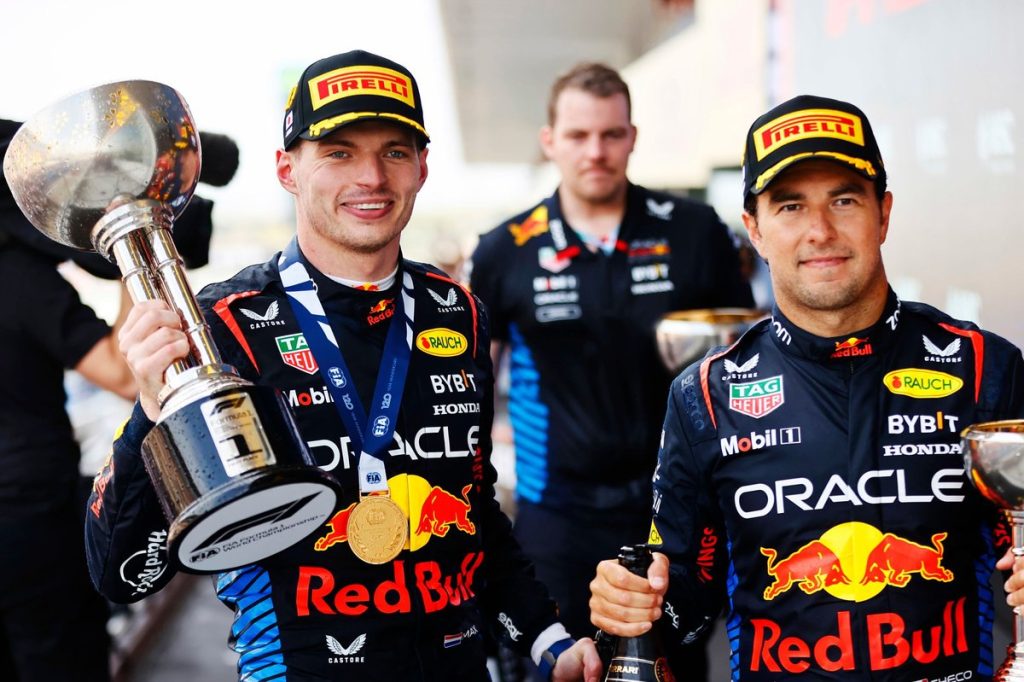
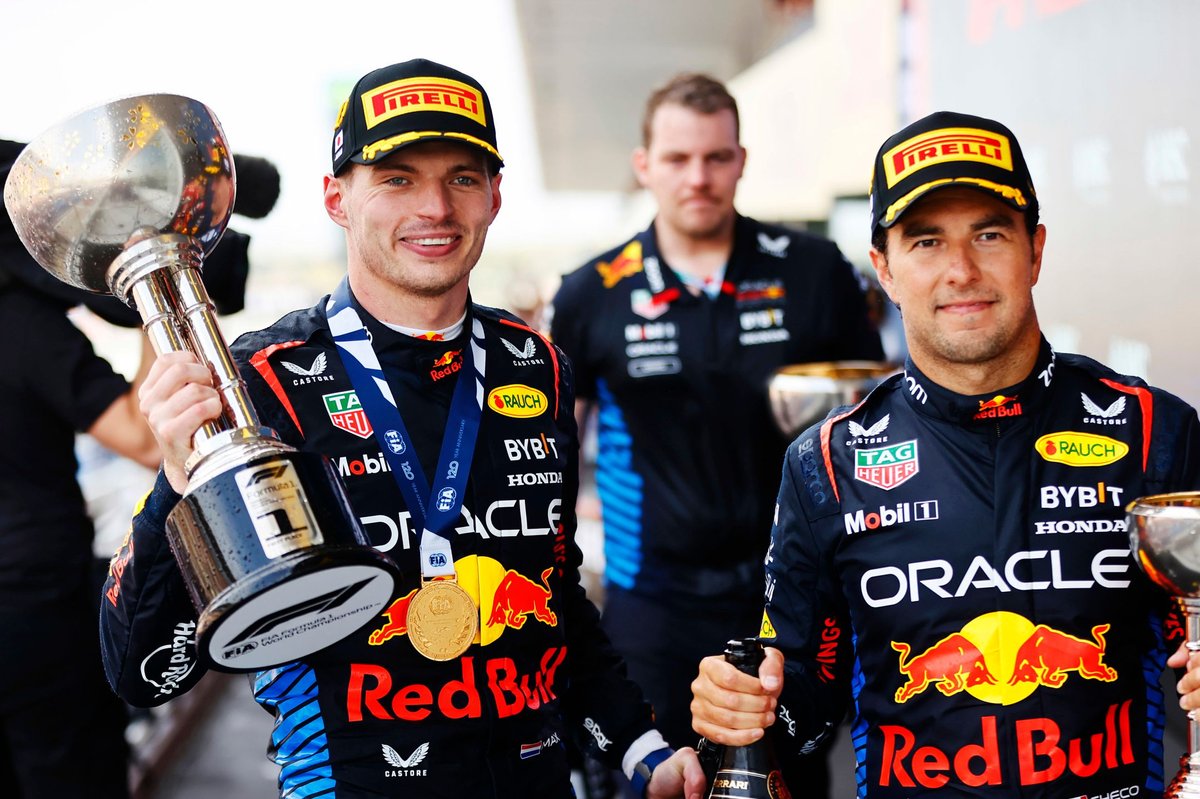
The squad’s miserable Australian adventure appeared a distant memory as the Bulls charged to a 1-2 result that never seriously looked in doubt.
The latest edition of the Autosport Podcast discusses Red Bull’s race, along with various other key talking points from the Japanese weekend.
Jake Boxall-Legge and Filip Cleeren join host Bryn Lucas to also examine another podium result for Carlos Sainz, as well as a sixth-place finish for Fernando Alonso that the Aston Martin driver rated as one of his top-five F1 performances.
The opening-lap clash between Alexander Albon and Daniel Ricciardo is also dissected, including the impact it has on a Williams team that has already been battling a shortage of parts.
Meanwhile, McLaren might be performing well on track, but there is plenty of intrigue away from it with technical director David Sanchez departing after just three months, and this is also discussed on the podcast.

Stroll found himself having to battle through the field at Suzuka after a disappointing qualifying performance had left him down in 16th on the grid.
He did manage to make progress, eventually finishing 12th in the race at Suzuka but, in the closing stages, as he fought the RB of Yuki Tsunoda, he voiced his frustration at the rate his Japanese rival was pulling away on the straights.
«It’s unbelievable how bad our speed is on the straight, man,» declared Stroll. «It’s like a different category!»
The manner of his message reminded many of the famous ‘GP2 engine’ radio outburst that his Aston Martin team-mate Fernando Alonso launched at the 2015 Japanese Grand Prix against Honda.
But, rather than Stroll’s outburst being a reference to a lack of straightline performance from Aston Martin, which has worked a lot in improving its aero efficiency since last year, the reality of what he was experiencing was quite different.
Team principal Mike Krack revealed after the race that he had looked into the circumstances surrounding Stroll’s complaint and found that it was actually nothing to do with the Canadian’s Aston Martin lacking top speed through either too much drag or not enough engine power.
Instead, he said it was an illusion that had been caused by rivals around him having better tyres, which gave them much greater traction out of corners so they could accelerate and reach top speed earlier.
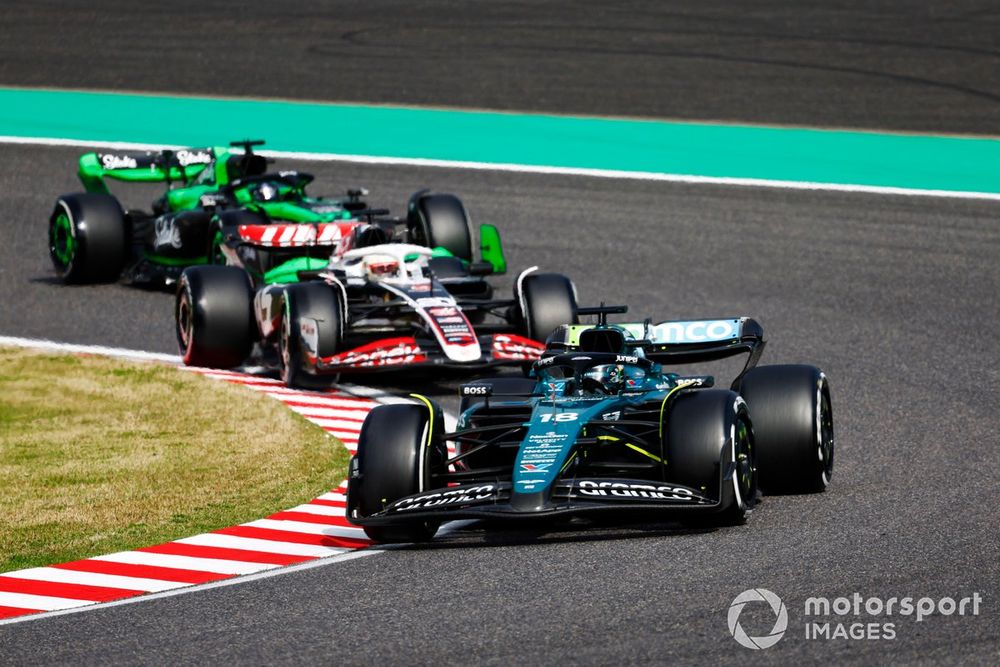
Lance Stroll, Aston Martin AMR24
Photo by: Sam Bloxham / Motorsport Images
«This is something I have looked at actually,» said Krack when asked by Autosport about what was happening with Stroll.
«What you see across the field is that there are very small differences in terms of straightline performance. But what you have is that at different times of the race, there are different tyre conditions, and the acceleration out of the corners is a different one.
«I think a lot of these comments come from such situations.
«If you look at the power-limited data, you see that all the cars are very, very similar. But the tyre conditions at various times of the race, you are offset by 10-12-15 laps of tyres, and then you accelerate completely differently.»
Speed trap figures from the Japanese GP show there were only very small differences between Stroll and Tsunoda.
At the sector two speed trap, which is on the run down to 130R, Tsunoda’s top speed in the race was registered at 304.8km/h, while Stroll logged 303.4km/h.

On the opening lap, Albon was hit by RB’s poor-starting Daniel Ricciardo in Turn 3, at the start of the Esses.
The glancing blow sent both cars into the tyre barriers, which had to be repaired during the following 30-minute red flag interruption.
While the accident happened at relatively low speeds, another crash was the last thing Williams needed.
The team still has no spare chassis available, which made Logan Sargeant sit out the Australian Grand Prix after Albon damaged his chassis in a practice shunt and took over his team-mate’s car.
Sargeant returned for Japan with the repaired chassis and escaped further drama when he crashed in FP1.
Another shunt in the race for Albon puts further squeeze on Williams in terms of spare parts production and the Thai driver said the thought of damaging his chassis went through his mind even before he hit the wall.
«Immediately. Before I even hit the wall,» he replied when asked when the spare chassis situation played on his mind.
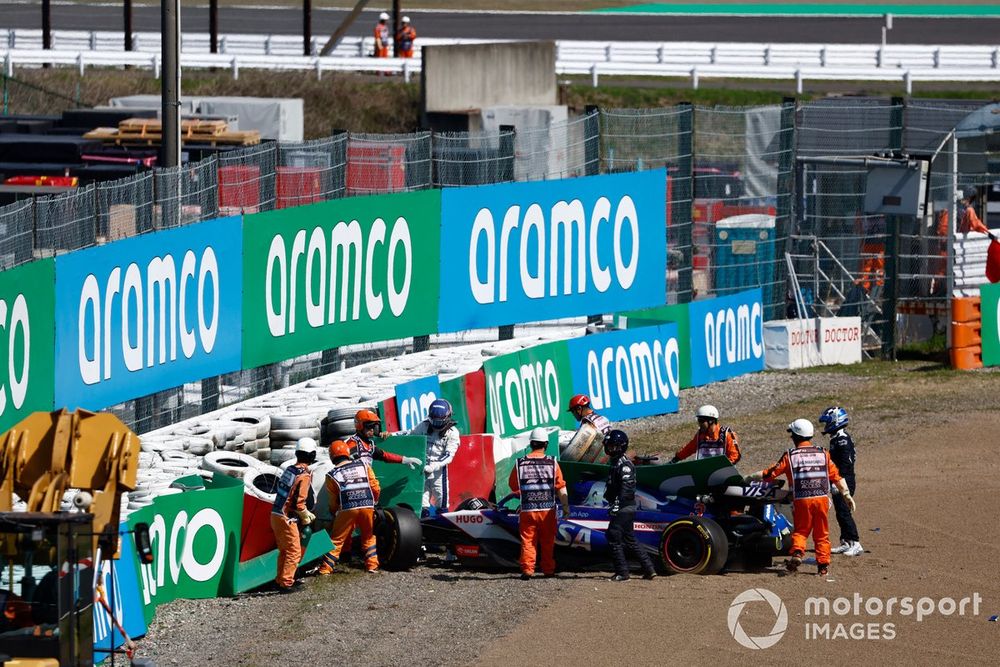
Marshals assist after a crash between Daniel Ricciardo, RB F1 Team VCARB 01, Alex Albon, Williams FW46, at the start
Photo by: Zak Mauger / Motorsport Images
«It’s exactly what we don’t need. The impact itself was relatively low speeds, but it’s the way that I hit the tyre wall. Normally, we have this kind of plastic barriers, the Armco. But this was much more dug in and it really stops very violently.
«They’re the questions I’m worried about, not for me, [but] for the car, because that’s where you can do damage.
«We haven’t had the car back yet. We need to assess it, hopefully it’s okay.»
When asked for his view of what happened, Albon said he was trying to back off once he realised he was in Ricciardo’s blind spot, but couldn’t help avoiding the contact.
«I had a grip advantage [on soft tyres], kind of surprised [with] the grip I had out of [Turn] 2, and was able to pull underneath him and have a good run into 3,» Albon explained.
«More about just trying to get him a little bit off line [at Turn] 3 and try and find a way for 4, 5, 6, 7 — to see if I could upset his line a little bit.
«Obviously just one of them. He didn’t see me, clearly. I tried to back out of it last minute.
«There was a moment where I realised he hadn’t seen me here, the way he’s pulling across, so I hit the brakes and tried to get out of it.
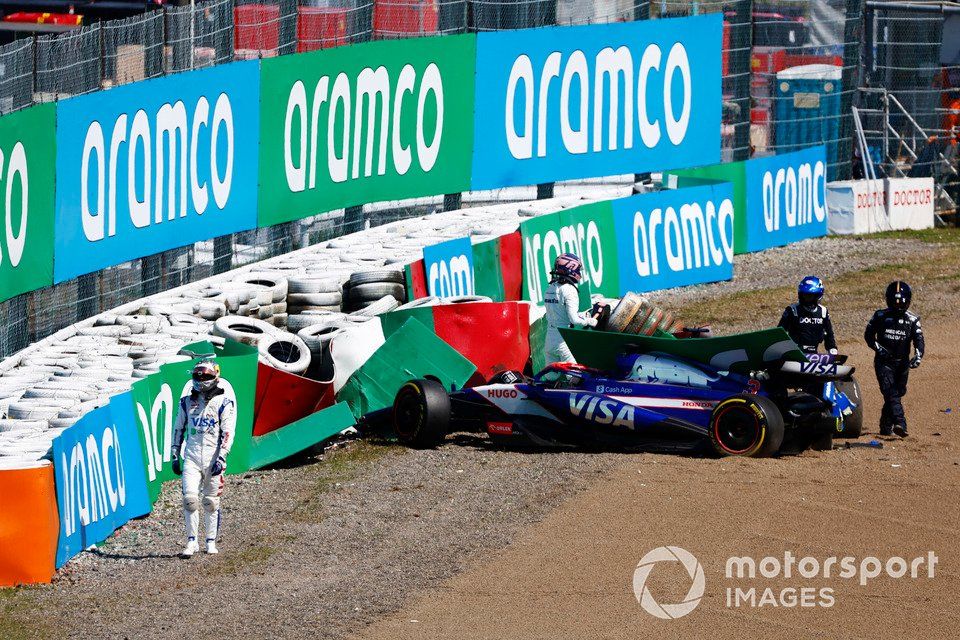
The cars of Daniel Ricciardo, RB F1 Team VCARB 01 and Alex Albon, Williams FW46 in the tyre barrier after they crashed on the opening lap
Photo by: Zak Mauger / Motorsport Images
«But I was almost too far alongside him and he still was coming across, I couldn’t avoid it.»
With no spare car available until Miami, Williams is continuing to walk on eggshells while its pool of spare parts dwindles.
«It’s no secret that we are having a tough time with it at the moment with the parts we’ve got,» Albon acknowledged. «This is going to hurt us for sure.»
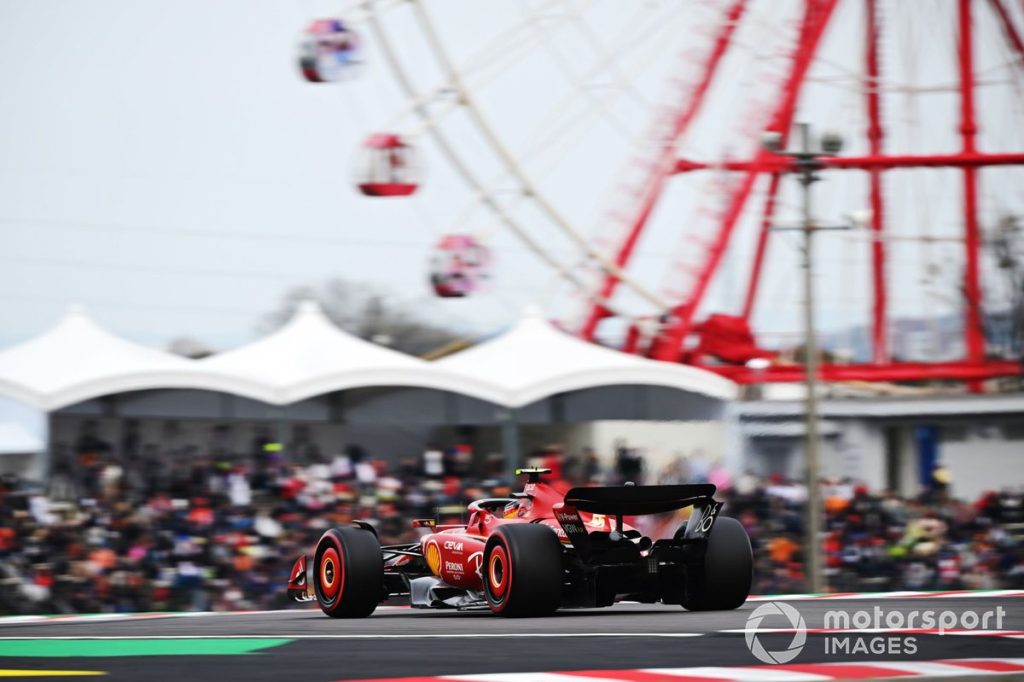
The Spaniard arrived at Suzuka in a buoyant mood after leading team-mate Charles Leclerc to a 1-2 finish at the Australian GP, and hopes had been high of a strong showing in qualifying after some promising long-run form in practice.
However, Ferrari endured a more challenging time in the fight for grid positions, as Sainz ended up fourth on the grid – 0.485 seconds adrift of pole position man Max Verstappen. Leclerc qualified eighth.
And while that gap to the front has highlighted just how much more progress Ferrari needs to make before it can consider itself a proper challenger to Red Bull, he thinks that it is a track-specific phenomenon that has been exposed here.
Asked by Autosport if the weekend had been a reality check for where Ferrari really stood against Red Bull, Sainz said: “Yeah. But we will fight for wins in other tracks.
“We will maybe go to the Monzas or the Singapores, and Miami maybe, and we’re still in the mix, you know, for [the victory]. But there’s other tracks where the Red Bull is just simply a much better package.
“As I said in the press conference [on Thursday], until we develop this car for this kind of track, they will be three-tenths to half a second ahead. So it’s time to put our heads down and try to bring a good package to help at this sort of track.”
Sainz explained that he never expected Ferrari to shine at Suzuka, with the circuits’s high-speed swoops putting a premium on the kind of aero performance that Red Bull’s RB20 is so strong at.
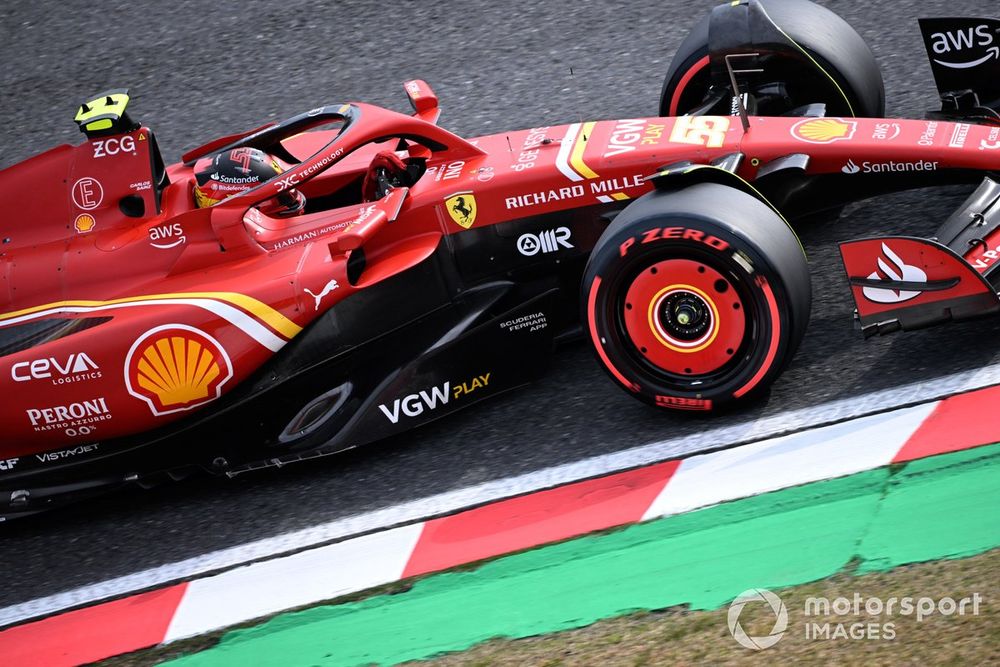
Photo by: Mark Sutton / Motorsport Images
“That’s why yesterday I was trying to bring everyone down a bit — because I knew that being one second away last year [was not going to be wiped away this year],” he explained.
“I know that we didn’t improve one second the car from last year to this year in a place like Suzuka, so it was going to be always tricky.
“But I’m very happy with how the car feels this year. It’s a step better. We just need to do another step in this sort of track. Anyway, I did some very clean, good laps today, that put me P4, which is a good position to fight tomorrow.”
But as well as Red Bull being clearly in front, Sainz reckoned that Suzuka had shown that McLaren too had an edge at high-speed venues.
“It’s clear that in the sort of long high-speed corners, the Red Bull and McLaren are still a step ahead of us,” he added. “A clear step ahead of us.
“But hopefully tomorrow we can fight for the podium. I think in the race, Red Bull are still out of reach. But with the McLaren hopefully, we can be a bit closer in the race.”


Alpine A524 technical detail
Photo by: Giorgio Piola
A look at the two front wing specifications available to Alpine in Japan, with the newer of the two being the upper one (splattered with green flo-viz paint). Note not only how the shape of the upper flaps differ considerably different but also how the team has made the switch to semi-detached flap tips at the endplate juncture.
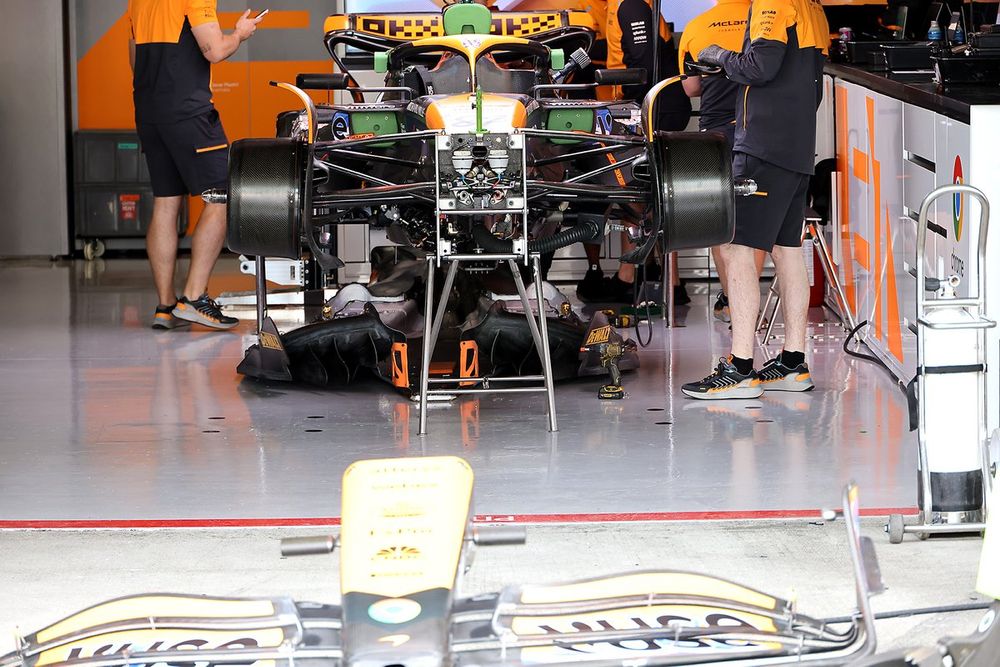
McLaren MCL38 technical detail
Photo by: Giorgio Piola
A look at the McLaren MCL38 as mechanics prepared the car, notably with the floor off the car we’re able to see the floor fences and the swept leading edge of the floor.

Mercedes W15 technical detail
Photo by: Giorgio Piola
A look under the covers of the Mercedes W15 reveals details of how the power unit and ancillaries are packaged, while we’re also able to see a number of metal stays housed within the sidepod’s bodywork that reduce the floor’s flexion.

McLaren MCL38 technical detail
Photo by: Giorgio Piola
A close up of the McLaren MCL38 chassis and the bodywork blister that interfaces with the floor and rear leg of the upper wishbone to better manage the airflow downstream.
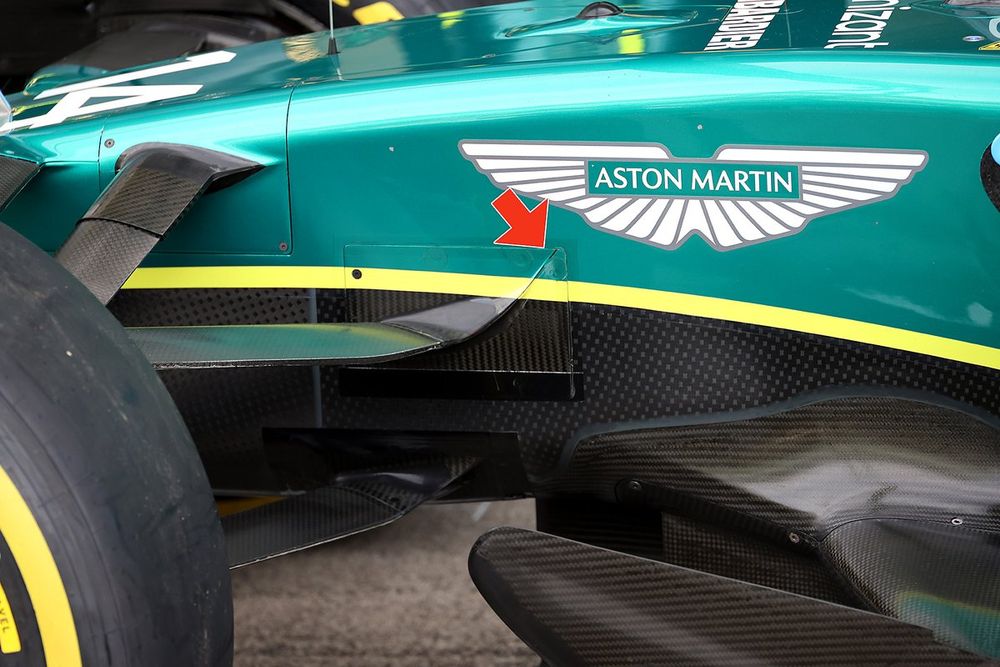
Aston Martin AMR24 technical detail
Photo by: Giorgio Piola
A close up of the extreme detail work that’s been undertaken around the inboard fixture point on the Aston Martin AMR24’s rear leg of the upper wishbone. Note how there’s a very thin tail section that’s aggressively swept upwards as it mates with the bodywork panel (red arrow).

Aston Martin AMR24 sidepod and floor comparison
Photo by: Uncredited
Aston Martin has a new floor and sidepod bodywork in Japan, with the descending swage line reintroduced in the sidepod’s bodywork in the front corner (red arrow), while the team has switched to a more twisted edge wing (blue arrow) and no cut-out at the rear of the floor, with a tapered tail section to the edge wing, where it had previously intersected the cut-out.
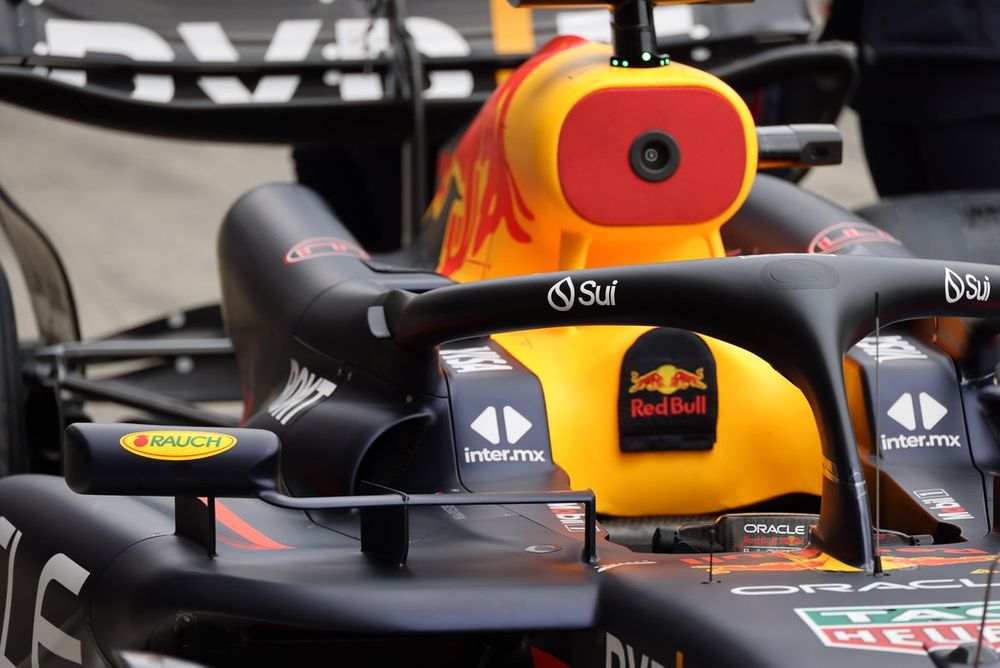
Red Bull Racing RB20 technical detail
Photo by: Giorgio Piola
A close up of the new upper intake placed beside the rear leg of the halo on the Red Bull RB20, while an additional vertical baffle wing has been added to the wing mirror assembly to help redirect the airflow across the sidepod’s upper surface too.
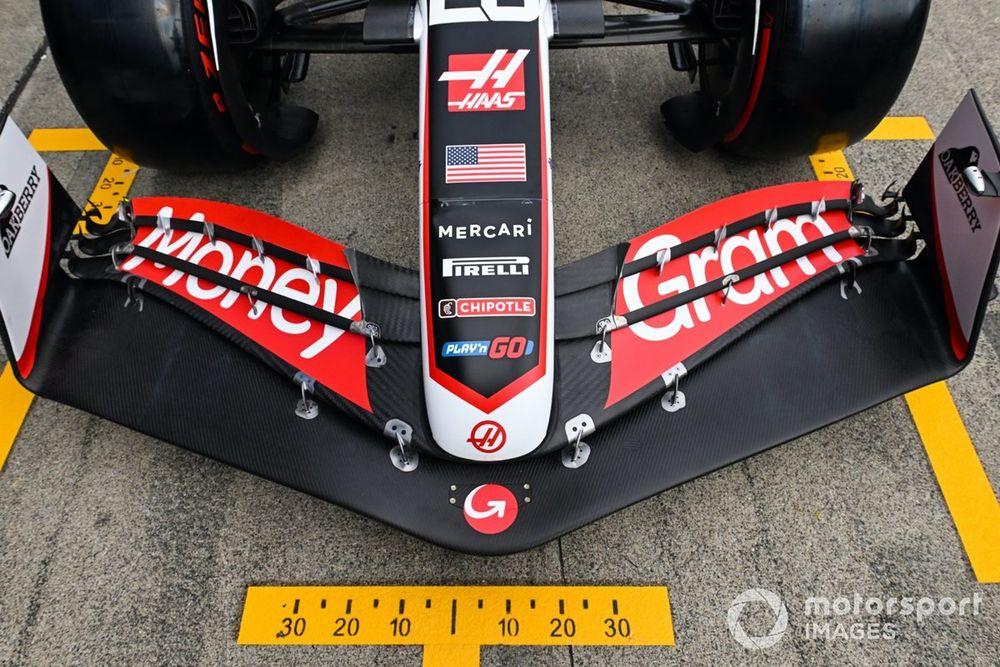
Nose cone and front wing of the Haas VF-24
Photo by: Mark Sutton / Motorsport Images
A top-down overview of the Haas VF-24’s front wing assembly, which notably has the outwashing slot gap separators between the upper two flap elements, while the semi-detached flap tips are skewed relative to the endplate.
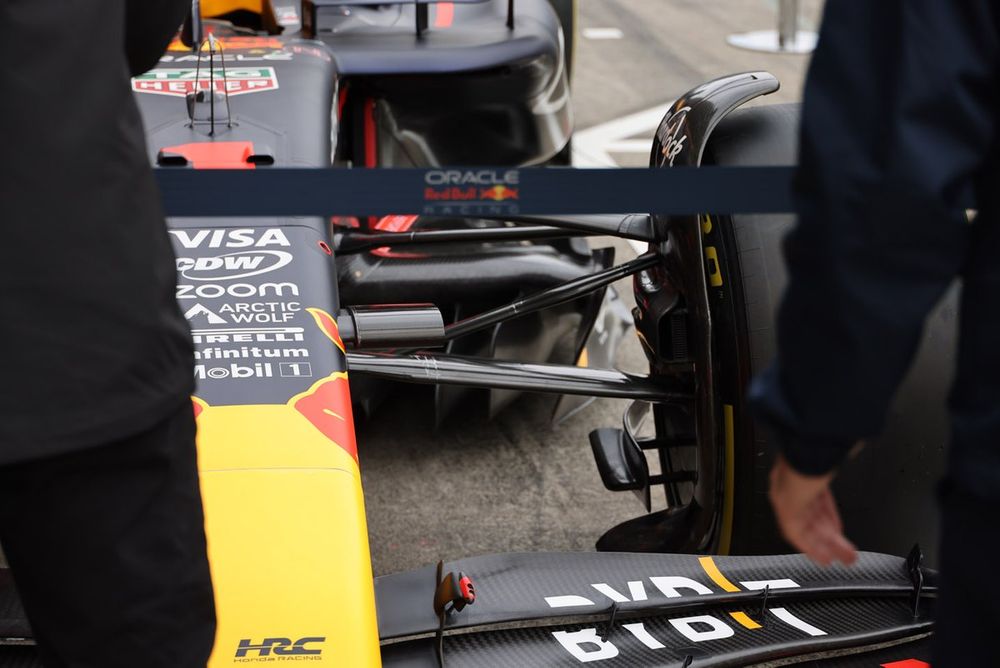
Red Bull Racing RB20 technical detail
Photo by: Giorgio Piola
A close up of the front brake end fence and the smaller cooling inlet that’s been installed on the Red Bull RB20 this weekend.

RB F1 Team VCARB 01 technical detail
Photo by: Giorgio Piola
Side view of the VCARB01, which has a new floor available in Japan, featuring revised floor fences and adjustments to the edge wing and the floor’s edge that runs alongside.

Alpine A524 technical detail
Photo by: Giorgio Piola
A close up of the rear end of the Alpine A524, with a notably shorter lower rear brake deflector being employed.

Williams FW46 technical detail
Photo by: Giorgio Piola
A close up of the new diveplane and semi-detached endplate and flap tip configuration that has been introduced by Williams this weekend.

Williams FW46 technical detail
Photo by: Giorgio Piola
An overview of the FW46’s sidepod bodywork and the intricate detailing on the floor’s edge.

Williams FW46 technical detail
Photo by: Giorgio Piola
A close up of the rear wing with its semi-detached tip section and swept central pillar mounting.

Red Bull Racing RB20 technical detail
Photo by: Giorgio Piola
A side view of the area around the new intake beside the halo and the snorkel-like bodywork that carries the airflow internally.
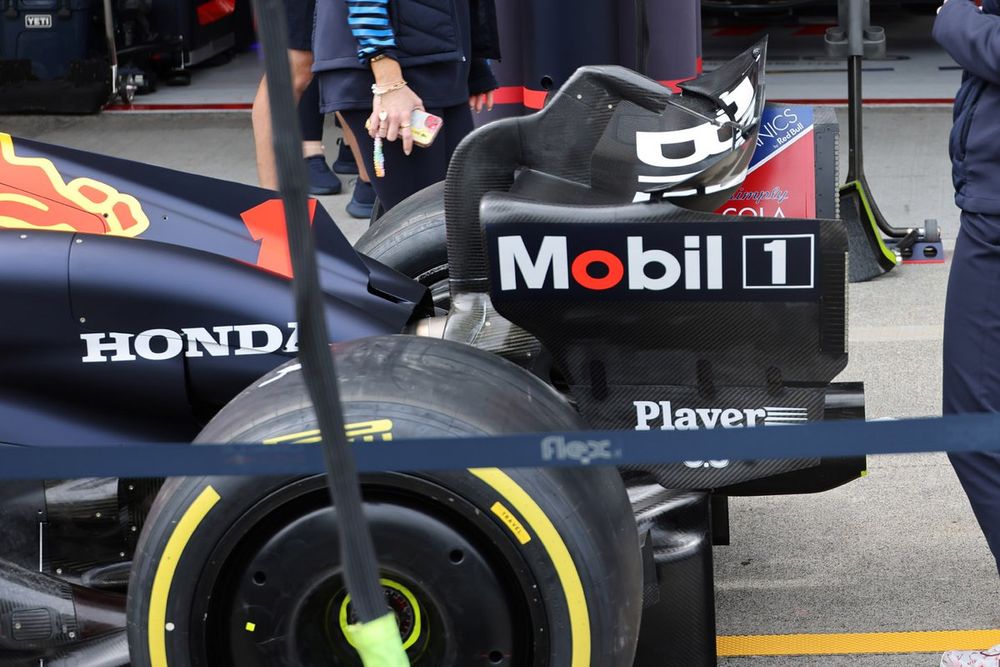
Red Bull Racing RB20 technical detail
Photo by: Giorgio Piola
A side view of the RB20’s rear wing assembly which shows how the rear endplate cutout is affected by the use of the semi-detached tip section above.
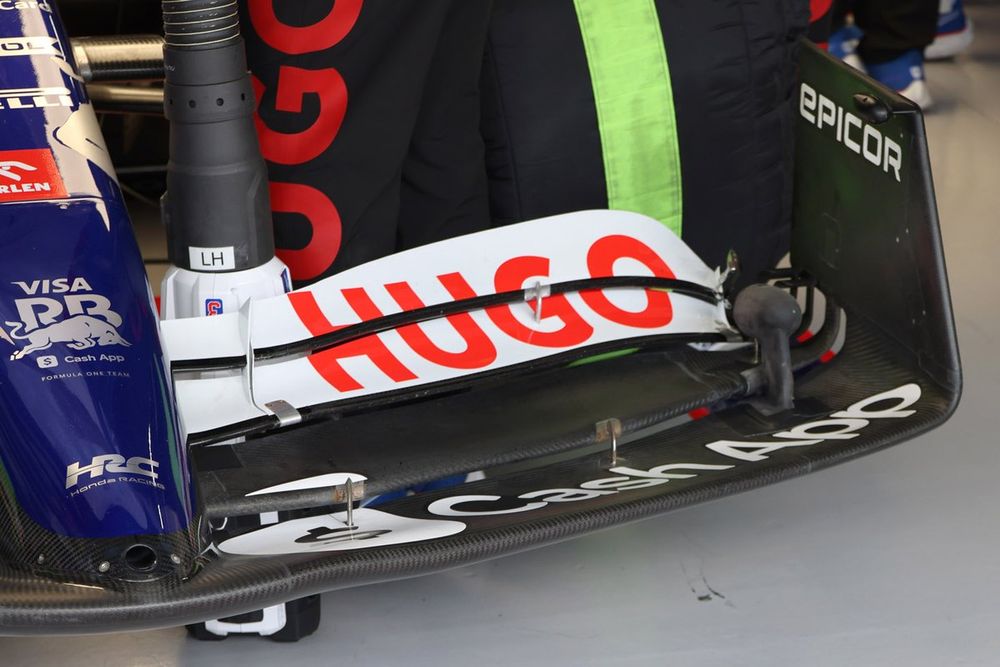
RB F1 Team VCARB 01 technical detail
Photo by: Giorgio Piola
A close up of the front wing on RB’s VCARB01 upon which the team has placed a camera pod in the outer portion to capture footage of how the wing behaves under load.

RB F1 Team VCARB 01 technical detail
Photo by: Giorgio Piola
Similarly, RB hung a camera pod from the rear section of its sidepod during free practice to gather information regarding how the rear section of the floor behaves.

Aston Martin AMR24 technical detail
Photo by: Giorgio Piola
The rear wing assembly on the Aston Martin AMR24 sprayed in flo-viz paint, as the team looks for visual confirmation that the updates that have been installed on the car this weekend are working as anticipated.

Red Bull Racing RB20 technical detail
Photo by: Jon Noble
A close up of the new edge wing on the Red Bull RB20, which features a tab-like vane on the rear corner.

Red Bull Racing RB20 technical detail
Photo by: Giorgio Piola
A close up of the rear facing and upwardly swept rear brake duct outlet on the RB20, which also features a pair of large winglets that are hung from its side.

Red Bull Racing RB20 technical detail
Photo by: Giorgio Piola
A top-down overview of the Red Bull RB20’s nose and front wing assembly which shows the narrow ridge in the outboard section of the wing that works with the endplate to generate outwash.

After the initial sighter runs had been completed, most teams sent their drivers out for lengthy stints on higher fuel to see how they stacked up on the tricky tyre management task at this demanding layout with its abrasive track surface.
Of the typical frontrunners, the two leading teams in that class so far this season – Red Bull and Ferrari – produced mirrored run plans that paint a potentially intriguing picture for Sunday’s race.
After Red Bull motorsport advisor Helmut Marko had called Charles Leclerc’s FP1 long run for Ferrari “a bit irritating” on Friday, the Scuderia again appears to have Red Bull-bothering pace, based on the averages of the final one-hour practice session.
With all the usual caveats about fuel loads and engine modes applying, Leclerc produced a 1m36.204s average over a 13-lap stint on the medium tyres.
This edges the best Red Bull long run on the same tyre – which came via Sergio Perez over 10 laps as Max Verstappen complained of understeer aboard his RB20 – by 0.482s.
Mercedes did things rather differently. It sent George Russell out to complete an even longer race simulation effort (14 laps) from the off in FP3 and his average comes in at an even quicker 1m35.301s.
In the other W15, Lewis Hamilton’s mid-FP3 long run was completed on the soft tyre that Pirelli insists, unlike in the autumnal 2023 event here just six months ago, is a possible race tyre thanks to the cooler spring temperatures easing the requirements on the drivers in a thermal degradation race.

Lewis Hamilton, Mercedes F1 W15
Photo by: Mark Sutton / Motorsport Images
Hamilton’s average came in at 1m35.985s but did feature quite a severe drop off in pace from the high 1m34s bracket initially to the low 1m37s by the end.
McLaren was the only other frontrunning squad to sample the softs over a race simulation in FP3, with Oscar Piastri’s average on this compound coming in at a slower 1m36.975s, but with a less severe pace drop off.
In the other MCL38, Lando Norris did not complete a long run.
Aston Martin’s race simulation was unique across the whole field, as it gave both Fernando Alonso and Lance Stroll hard tyres for their long run efforts.
This is the same C1 compound most teams of the frontrunning squads used twice in last year’s race, with Red Bull a notable outlier in doing two medium stints with Verstappen in the event he ended up winning by 19 seconds over Norris.
Alonso produced the best average for Aston at 1m35.692s over 11 laps.
The variation in FP3 run plans across the teams complicates the true long run performance picture from Suzuka practice.
But there is enough evidence from this FP3 data and Pirelli’s public utterances so far this weekend it indicate there may be some more race strategy variance in Sunday’s main event compared to what occurred here in 2023.

A new way of allocating wet-weather rubber for 2024 meant teams were reluctant to use any intermediate tyres in Suzuka’s damp FP2 session because they wanted to save them for later in the weekend.
It meant that drivers sat in garages for most of the session, with the only major running coming very late on when conditions were dry enough for slicks.
The lack of action left fans frustrated and seven-time world champion Lewis Hamilton bemoaned new regulations having triggered the situation.
“It is shame we didn’t get that session,” he said about FP2. “They have changed the tyre rule, so therefore no one goes out and runs on the intermediate, which just doesn’t make sense, really. But there you go.”
The situation Hamilton was referring to is tweaks made to the F1 sporting regulations over the winter that were originally aimed at increasing the allocation of rain tyres for all teams.
Instead of four sets of intermediates and two sets of full wets as they got in 2023, teams are now allowed five inters and three wets per grand prix weekend.
However, as part of the deal agreed to allow this extra set, a rule that gave teams a free set of tyres on wet Fridays was removed.
Previously, at events where there was no sprint race scheduled, if either of the two Friday practice sessions were declared wet, then an additional set of intermediates would be made available to any driver who used that compound in the session.
This effectively meant there was a free tyre set available, and it encouraged teams to run in the session because there was no downside to adding life to the inter.

Kevin Magnussen, Haas VF-24
Photo by: Mark Sutton / Motorsport Images
Now, however, burning through an intermediate could leave teams exposed to not having as good a tyre allocation as rivals who have saved sets if qualifying or/and the race are wet – which is why so few drivers ran with inters at Suzuka.
Pirelli’s chief engineer Simone Berra said the rule change was not something the manufacturer had had any influence over, and it was obvious how it had contributed to what took place in Japan on Friday.
“This [rule change] was obviously voted by all the teams together with FIA and F1,” said Berra.
“Obviously nowadays a team doesn’t have to return one set of intermediates after it is used in free practice, like it was last year. So especially at this circuit, where you have, let’s say, a high level of degradation, and considering that we could have some rain on Sunday, most of them decided to keep the five sets unused apart from RB and other teams that did an out- and in-lap.
“It is something that we will discuss further with the FIA and with the teams, to try to find a way to make them run in practice. It is not our decision in the end, but in the next weeks it will be a topic for discussion.”
Berra believed a simple tweak could work in encouraging teams to run in damp practice session: making it mandatory that all teams had to return one set of intermediates after a session that has been declared wet.
“They can keep the five sets from the start but, if a session is declared wet, then you have to return one set of intermediates,” he explained.
“It then makes no sense not to use it and [instead] return a new set. So that will be a way to encourage them to run.”
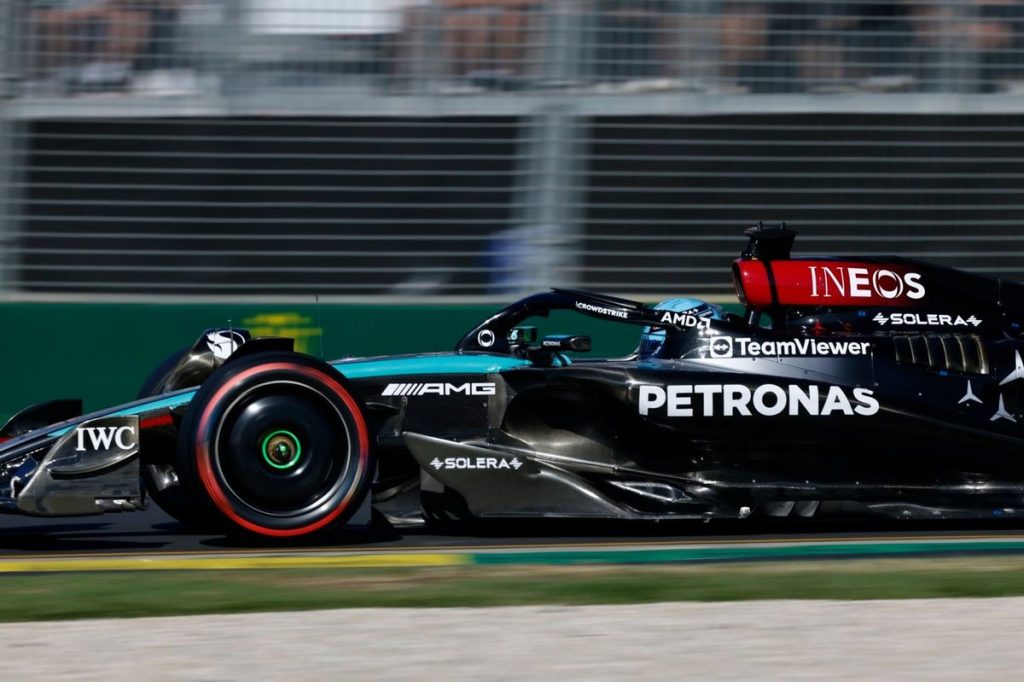
The F1 pack has been quizzed extensively about the incident late in the race last time out in Melbourne as this weekend’s Suzuka race gets underway, with a notable split in opinions amongst the racing cohort.
Haas driver Nico Hulkenberg “wasn’t very impressed with Fernando’s tactics”, while Sauber racers Valtteri Bottas and Zhou Guanyu both called the decision to penalise the Spaniard “harsh”.
Russell aired his views in the pre-event press conference in Japan, where he made the case that if the FIA stewards had not penalised Alonso, such tactics might have started appearing in different F1 racing scenarios and possibly even developed into dangerous situations in junior single-seater competition.
“I think it was obviously a strange situation that happened last week,” said Russell.
“As I said at the time, [I was] totally caught by surprise.
“I was actually looking at the steering wheel making a switch change on the straight, which we all do across the lap, and when I looked up I was in Fernando’s gearbox and it was too late and then next thing I know I was in the wall.
“So, I think if it were not to have been penalised, it would’ve really opened up a can of worms for the rest of the season and in junior categories, saying, ‘are you allowed to brake in a straight, are you allowed to slow down, change gear, accelerate, do something semi-erratic?’
“I don’t take anything personally with what happened with Fernando and it probably had bigger consequences than it should have.
“But if it went unpenalised, can you just brake in the middle of the straight? I don’t know.”
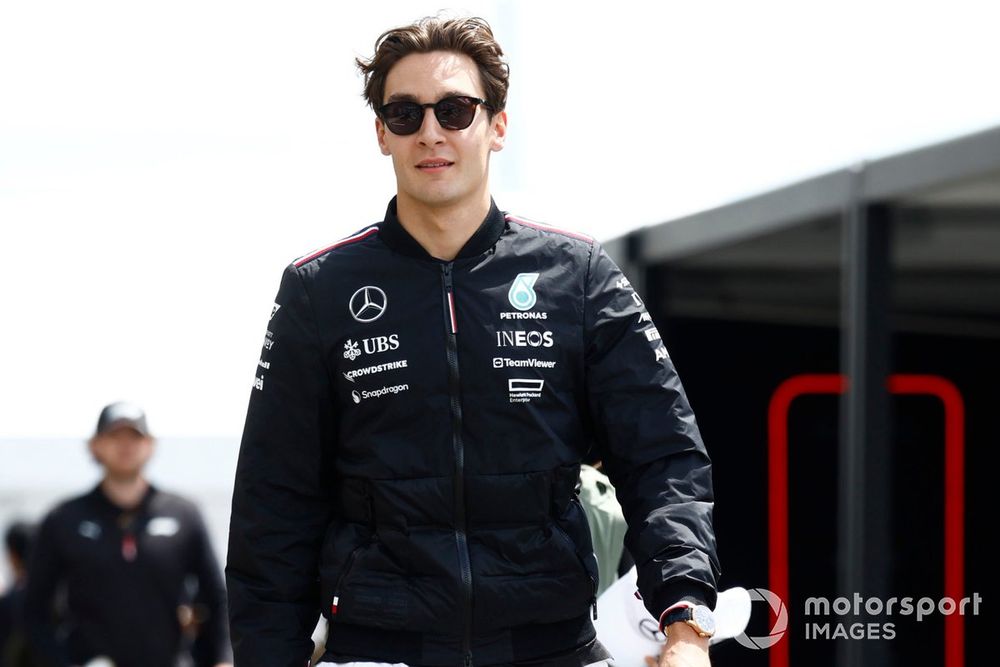
George Russell, Mercedes-AMG F1 Team
Photo by: Sam Bloxham / Motorsport Images
When asked by Autosport for his thoughts on the ethics of tactics such as Alonso deployed, which have long been considered a legitimate part of racing in many quarters, Russell replied: “What you say is absolutely correct – every driver is open to change their line, brake earlier, power through the corner, do whatever.
“[But] when we start braking in the middle of the straight, downshifting, accelerating, upshifting again, then braking again for a corner, I think that goes beyond the realms of adjusting your line.
“And, as I said, I was actually looking at my steering wheel in that straight – as I’ve done every single lap prior.
“And when I looked up 100m before the corner, I realised I was right behind Fernando, rather than the half a second that I was.
“We’ve got so many duties to take care of when we’re driving – going around the race track, changing all the settings on the steering wheel, making sure you’re in the right engine mode, taking care of the tyres, talking to your engineer, managing the deltas on your steering wheel when it’s an in-lap, out-lap, safety car – whatever it may be.
“And if you add into the mix that you’re allowed to brake in the middle of the straight to gain or get a tactical advantage, I think that is maybe one step too far.
“And the same when we talk about moving down the straight to get out of the slipstream.
“There was lot of talk about that in the past. It’s not overly dangerous, but it has a concertina effect. If everybody is moving around and if suddenly you brake test and there are 10 cars behind, it probably has a greater effect by the 10th driver than it does for the first driver behind.
“So, as I said, I don’t think what Fernando did was extraordinarily dangerous, but it will open a can of worms if it wasn’t penalised.”
The fallout from the incident is set to be discussed between officials and the drivers at the Suzuka driver’s meeting post-practice on Friday.
The location of Russell’s crash at Albert Park will also be a key point of order in that meeting.